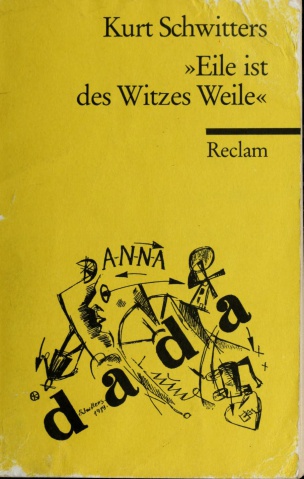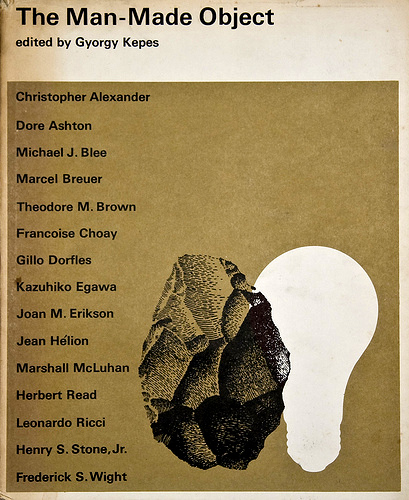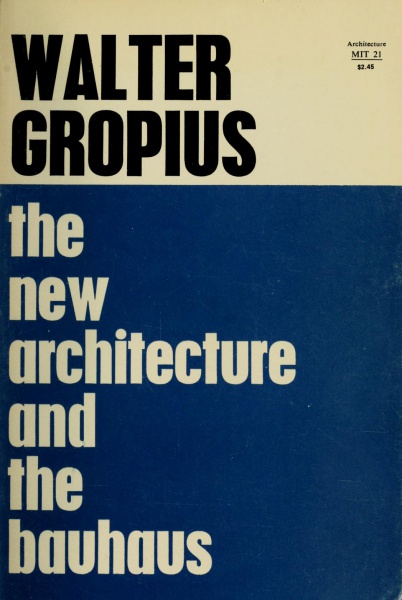Kurt Schwitters: “Eile ist des Witzes Weile”: eine Auswahl aus den Texten (1987) [German]
Filed under book | Tags: · art, avant-garde, dada, literature, poetry

A wide-ranging collection of poems, prose, manifestos and autobiographical texts by Kurt Schwitters. Several texts in English.
Edited by Christina Weiss and Karl Riha
Publisher Philipp Reclam jun., Stuttgart, 1987
ISBN 3150083923
160 pages
PDF (21 MB, no OCR)
Comment (0)Gyorgy Kepes (ed.): The Man-Made Object (1966)
Filed under book | Tags: · architecture, art, craft, design, industry, object, painting

Between 1965 and 1966, New York book publisher George Braziller published a six volume series under the title Vision + Value, edited by renowned artist, designer and M.I.T. professor, Gyorgy Kepes.
The aim of the series, “…to stimulate the circulation of ideas, to find channels of communication that interconnect various disciplines and offer us a sense of structure in our 20th century world…,” encouraged interdisciplinary cooperation and sought to bring together the day’s foremost artists, scientists and scholars.
This volume presents a general evaluation of the man-made object as an important environmental factor in the shaping of the mores, feelings, and values. The man-made object, from ornamental trifles to large scale buildings, is here considered not only for its formal and aesthetic aspects, but also for its psychological and sociological impact.
Contributions by Gillo Dorfles, Herbert Read, Joan M. Erikson, Kazuhiko Egawa, Michael J. Blee, Marshall McLuhan, Christopher Alexander, Leonardo Ricci, Marcel Breuer, Theodore M. Brown, Jean Hélion, Henry S. Stone, Jr., Frederick S. Wright, Dore Ashton, Françoise Choay.
Publisher George Braziller, New York, 1966
Vision + Value Series, 5
230 pages
PDF (51 MB, no OCR)
Comment (0)Walter Gropius: The New Architecture and the Bauhaus (1935/1965)
Filed under book | Tags: · architecture, art, avant-garde, bauhaus, design

In this short book, first published one year after his emigration to England, Gropius presents the ideas of the Bauhaus, which had been closed and banned in Germany, to an Anglo-Saxon and American audience. The book contributed considerably to Gropius’ rise to a celebrated architect – particularly in the US – and introduced the Bauhaus to America. “When he came to Harvard in 1937, he did refer to the exemplary American building industry, which had no equal, but he also pointed out that he did not want to teach Americans what American architecture should look like, and that he most certainly did not want to introduce a European style. This was exactly what he attempted and finally did, of course, as he believed that architecture had to express the forces of the present time like the members of the Neues Bauen [New Building] with himself at their head had shown in the 1920s.” (Nerdinger). This volume, in which the architect looks back on his work in Weimar and Dessau, reveals the foundations of the self-confidence expressed here.
Translated by P. Morton Shand from the German manuscript entitled Die neue Architektur und das Bauhaus. Grundzüge und Entwicklung einer Konzeption
With an Introduction by Frank Pick
First published by Faber and Faber, London, 1935
Publisher The MIT Press, 1965
ISBN 0262570068
112 pages
Review: Herbert Read (Scrutiny, 1935)
PDF (4 MB, updated on 2019-9-13)
Comment (0)
